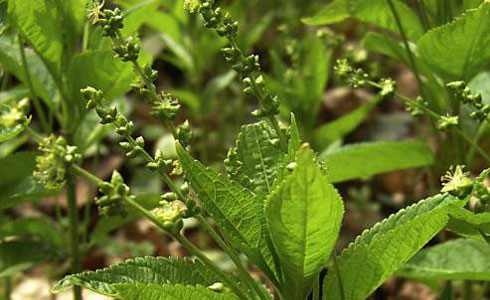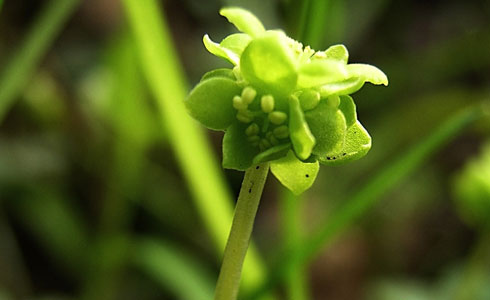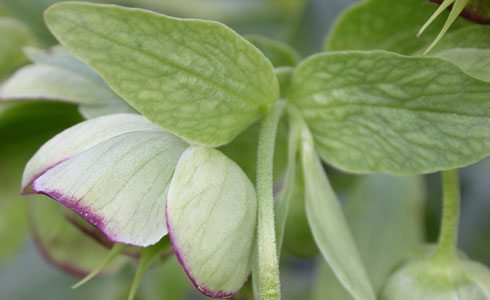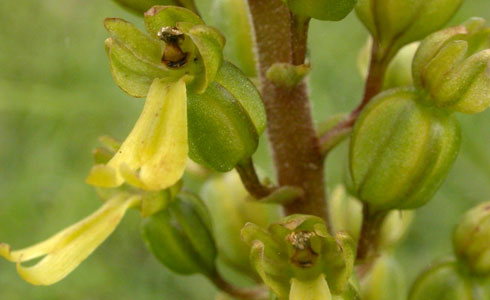Primary navigation
Green woodland plants
When you are looking for bluebells you might also be able to spot these green plants in the woods and gardens of the British Isles.

Dog's mercury, Mercurialis perennis, Northamptonshire. Widespread across most of the UK, except northern Scotland. It is rare in Ireland. See map for further information about its distribution. © M.A. Spencer

Green hellebore, Helleborus viridis, Somerset. Scattered on chalk and limestone soils throughout much of Britain, but largely absent from Scotland. Found in woodland glades and old hedgerows which mark the remains of past woodlands. As with the Stinking Hellebore its native range is now difficult to determine as it was previously grown in gardens. See map for more information about its distribution. © F.J. Rumsey.

Herb Paris, Paris quadrifolia, Hants. Widespread in the UK but very scarce in Scotland and western Wales and absent from the extreme south-west of England. It is a very distinctive plant of ancient woodlands on moist chalky soils, with its four roundish leaves, a slender stalk, and a green flower with rather whiskery stamens. See map for more information about its distribution. © F.J. Rumsey.

Lords-and-ladies, Arum maculatum, Berks. Widespread across most of the UK, except northern Scotland. In summer and autumn the plant produces club-shaped spikes with red berries. See map for more information about its distribution. © M.A. Spencer.

Moschatel, Adoxa moschatellina, W. Kent. Widspread across most of the UK, except northern Scotland and parts of eastern England. This small green-flowered plant is often overlooked. See map for more information about its distribution. © M.A. Spencer.

Stinking hellebore, Helleborus foetidus, W. Kent. Widespread throughout England and Southern Scotland. Its native range is now difficult to determine as it is widely grown in gardens and it often escapes from there into the wild. See map for more information about its distribution. © F..J. Rumsey.

Twayblade, Listera ovata, Hants. A common but often overlooked orchid found throughout the British Isles. It is easily recognised by its two roundish paired leaves and the long spikes of its greenish-yellow flowers which look like little bonneted people. See map for more information about its distribution. © F.J. Rumsey.

Wood horsetail, Equisetum sylvaticum, Somerset. Frequent in Wales, upland England and Scotland but rare and declining in lowland England. This plant is associated with old wet woodlands, often on ancient boundary banks. It is very distinctive with its highly divided delicate branching and chaffy brown scales at intervals around the ridged stem. See map for more information about its distribution. © F.J. Rumsey.

Wood spurge, Euphorbia amygdaloides, Berks. Widespread throughout southern England and Wales. Very rare in Scotland and Ireland. See map for more information about its distribution. © M.A. Spencer.
Related information
Toolbox
- Contact and enquiries
- Accessibility
- Site map
- Website terms of use
- © The Trustees of the Natural History Museum, London
- Information about cookies
- Mobile
